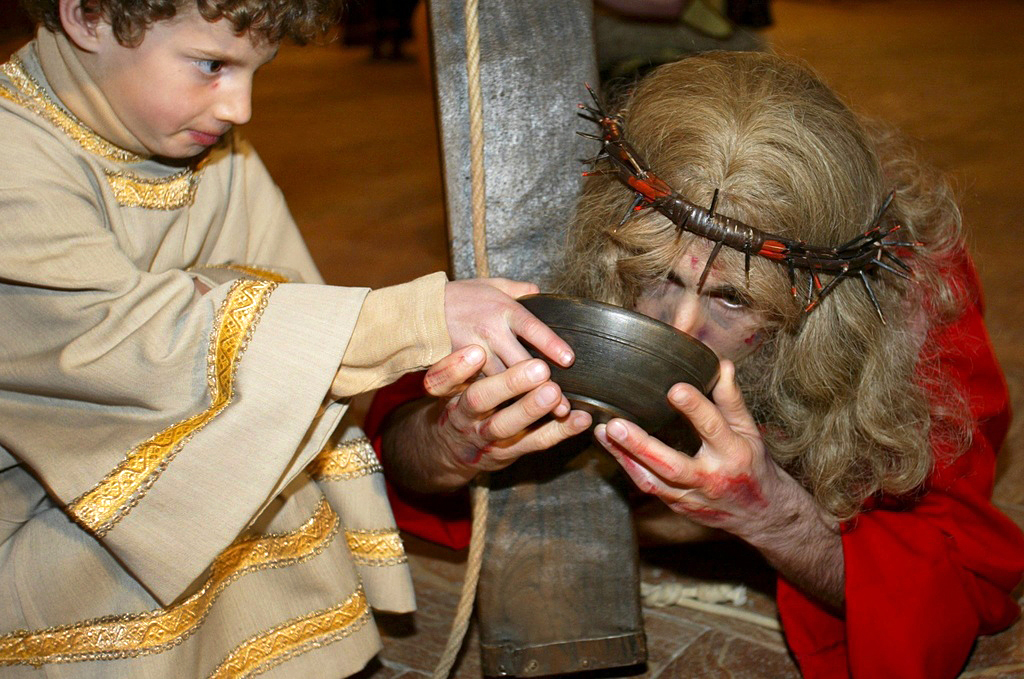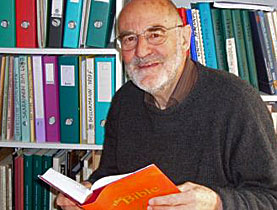Easter customs have deep roots

The Easter story lies at the heart of the Christian religion, but many people nowadays associate Easter rather with hunting for eggs and taking a few days holiday.
Some of the old celebrations have disappeared, some have adapted, some have been revived, and some have doubtless been recently invented. It is not always easy to know which is which.
Easter has today become highly commercialised, with chocolate rabbits and eggs appearing in the shops weeks ahead of the festival itself.
Paul Hugger, retired professor of popular culture studies at Zurich University, remembers how up to about 50 years ago Easter treats were only on sale for a few days. The religious side of the festival was much stronger than it is now.
“The year was monotonous: people were glad that the Church gave it a structure. After the fasting of Lent came Easter and the joy of life,” he said.
“A custom dies out when it no longer has a function in society,” explained Mischa Gallati, also of Zurich University’s popular culture studies institute. “But usually it doesn’t die: it changes to adapt to changes in society.”
Guarding the tomb
One custom, once widespread in the Roman Catholic areas of eastern Switzerland but which has now largely disappeared and been forgotten was the installation of a “holy sepulchre” in churches.
Peter Kern, who has written a book about the custom as practised in canton St Gallen, told swissinfo.ch that a sepulchre, up to about five metres high, would be installed in churches on the Thursday before Easter and a model or painting representing the body of Christ would be laid in it on Good Friday. People came to pray at it, sometimes going from one church to the next.
Then during the Easter night service the body would be hidden, and a figure of the risen Christ would dramatically appear.
“It was very awe-inspiring and emotional,” said Kern. “It left a lasting impression in the minds and hearts of those who are old enough to have seen it.”
As a teenager in the 1940s Hugger was chosen to be one of the young men who guarded it on the night after Good Friday. It was an honour, he told swissinfo.ch, but also a test of character, since it meant spending many hours in almost complete darkness.
A few places still erect the tombs, if only every two or three years. But no one stands guard any more.
Other striking religious traditions have survived – and have also become tourist attractions. In Romont, in canton Fribourg, the “pleureuses”, or weeping women, dressed in black, their faces veiled, process round the church on Good Friday carrying the symbols of the passion on red cushions, while a penitent carries a cross.
In Mendrisio, in canton Ticino, on Maundy Thursday and Good Friday an elaborate re-enaction of the Easter story is performed. Both of these feature on the Switzerland Tourism site.
A family feast
There is a tradition in some French-speaking areas that the bells go to Rome in the week before Easter and return on Easter Day, bringing the Easter eggs. But in most of Switzerland it is definitely the Easter hare (or rabbit in French- and Italian-speaking areas) which does this. He hides them, probably in the garden, for children to find.
“The hare emerged in this role in the 18th century and reflected the new form of nuclear family, and the values associated with it. The hare is portrayed as industrious and kind, and someone who cares about children,” Gallati said.
He displaced an array of other Easter animals – including the fox and the donkey – as Easter started to be celebrated within the narrow family circle, he explained.
But as family structures have changed, offering an alternative to the nuclear model, the custom has changed too: Gallati has observed how nowadays groups of families often get together to organise a communal egg hunt, rather than doing it individually as they used to.
Sometimes it is local tourist organisations which seize on the possibilities offered by Easter, sometimes customs appear to arise spontaneously.
Innovations
The custom of decorating the town’s wells in the French-speaking town of Nyon is not more than 30 years old, but already none of today’s organisers can remember exactly where the idea came from. But it is now a well-established tourist attraction, with a competition and even guided tours.
Rougemont in western Switzerland has a unique tradition – dating back to 2001. Each year 12 huge eggs are decorated according to a different theme and displayed in the village.
An egg tradition that has seen some ups and downs is “egg bashing”, or eiertutschen in German. People do this at home: hitting each end of their – usually beautifully decorated – eggs against somebody else’s: the one whose egg breaks gives it to their rival.
Bern is one city where this has become a public event in a specific location in the old city, at a specific date and time. Nadja dalla Vecchia, who helped save it when it seemed in danger of disappearing about eight years ago, told swissinfo.ch that her father – now 65 – had done it as a child, and taken her when she was a girl. But when she went with her own children the number of participants had dwindled drastically. Appeals to the mayor, the local tourism office, and an article in the local paper, revived it.
“You meet people, some of whom you only see once a year. And there are always new ones. It gets passed round by word of mouth.”
It intrigues outsiders. “We use hands and feet to explain to the Japanese tourists, and then they join in too.”
An unlikely variation on the same custom is “Zwanzgerle” in Zurich, again in a specific place at a specific time, where children challenge adults to break their decorated eggs with a 20 cent coin. This may sound impossible, and certainly the children can expect to leave slightly richer than when they came, but the occasional skilful adult manages to win the egg.
According to Gallati, this custom is centuries old, although it died out and was revived in the 1930s.
The customs themselves may come and go, but Easter without customs is surely unthinkable!
The three days of Easter are Good Friday, Holy Saturday and Easter Sunday.
They are preceded by Maundy Thursday.
Christians believe that Jesus was crucified on Good Friday.
He was laid in a tomb, or sepulchre, and rose from the dead after three days.
The instruments of the passion are the items used during the torture and death of Christ.
They include the scourge with which he was beaten, the crown of thorns placed mockingly on his head, and the nails used to nail him to the cross
Like many of the important Church festivals, the roots of Easter go back to pagan times, and this is reflected in some of the customs.
The English word Easter, is even derived from the name of a pagan goddess of spring, Eostre, or Ostara. But the Christian belief that Christ rose from the dead three days after the crucifixion ties in with the re-emergence of life in spring.

In compliance with the JTI standards
More: SWI swissinfo.ch certified by the Journalism Trust Initiative












You can find an overview of ongoing debates with our journalists here . Please join us!
If you want to start a conversation about a topic raised in this article or want to report factual errors, email us at english@swissinfo.ch.